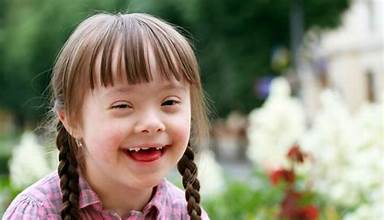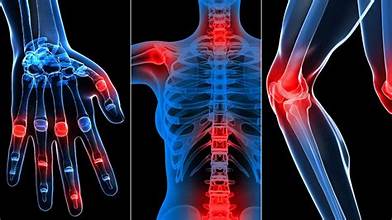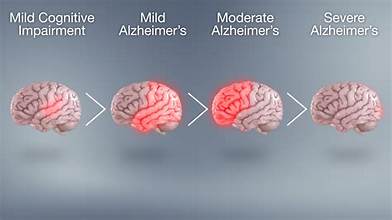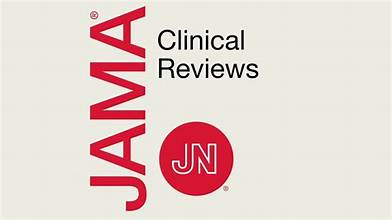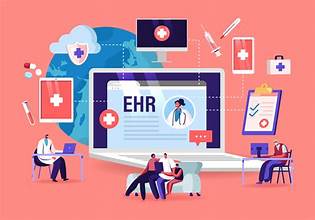What is Down Syndrome?
Down syndrome is a genetic disorder that occurs when abnormal cell division leads to an extra full or partial copy of chromosome 21. This additional genetic material affects normal development and results in the distinct physical and developmental features associated with the condition. The word “syndrome” refers to a group of symptoms or characteristics that appear together in a consistent pattern. The condition was first identified by English physician John Langdon Down; after whom it is named.
The effects of Down syndrome can vary from person to person, but it typically leads to lifelong intellectual disabilities and developmental delays. It is the most common chromosomal cause of intellectual disability in children and is often linked with other health issues such as heart defects and digestive problems. However, with increased awareness, early medical care, and supportive therapies, individuals with Down syndrome can significantly enhance their development, improve their quality of life, and lead meaningful, fulfilling lives.
Down syndrome is the most frequently occurring chromosomal disorder in the United States, affecting about one in every 700 to 800 newborns. This means that around 6,000 babies are born with the condition each year. It’s estimated that between 400,000 and 600,000 people across the country are currently living with Down syndrome.
Types of Down Syndrome:
There are three main types of Down syndrome, each caused by different genetic variations involving chromosome 21. Although the physical traits and developmental characteristics are often similar, the underlying genetic differences help explain the variation in symptoms and severity among individuals.
1.Trisomy 21 (Non disjunction Down Syndrome):
Trisomy 21 is the most common form, occurring in about 95% of all Down syndrome cases. It happens when every cell in the body has three copies of chromosome 21 instead of the usual two. This results from an error in cell division known as nondisjunction that occurs either in the sperm or egg before fertilization. The extra chromosome affects the way the body and brain develop, leading to the characteristic features and developmental delays seen in Down syndrome.
2. Translocation Down Syndrome:
Translocation Down syndrome accounts for around 3% of cases. In this form, an extra part or even a full copy of chromosome 21 becomes attached to another chromosome, often chromosome 14 or 22, rather than existing as a separate chromosome. This rearrangement can occur randomly, but sometimes it is inherited from a parent who carries a balanced translocation (meaning they have the rearranged chromosomes without any symptoms). Genetic counseling is often recommended for families when this type is diagnosed.
3. Mosaic Down Syndrome:
Mosaic Down syndrome is the rarest type, found in about 2% of individuals with the condition. In this case, some cells contain the usual two copies of chromosome 21, while others have three copies. This “mosaic” pattern occurs due to an error in cell division after fertilization. Because not all cells are affected, people with mosaic Down syndrome may have milder physical traits and fewer developmental challenges than those with other forms, although this can vary widely.
Down Syndrome Symptoms and Features:
Down syndrome affects individuals in various ways, and the level of impact differs from person to person. Some individuals can grow up to live fairly independent lives, while others may need ongoing support with daily activities. Most people with Down syndrome experience mild to moderate challenges in areas such as learning, reasoning, and communication. They continue to develop skills throughout life, though milestones like walking, speaking, and social interaction may take longer to achieve. Behavioral differences are also common individuals may have difficulty focusing, managing impulses, or handling frustration, which can affect how they relate to others. As they reach adulthood, many people with Down syndrome can make personal decisions and manage simple responsibilities, while still needing assistance with more complex matters like finances, relationships, or healthcare. With the right educational support, some may attend specialized college programs and live semi-independently.
Physically, people with Down syndrome often share certain recognizable traits. These can include upward-slanting eyes, small ears, a flat nasal bridge, a protruding tongue, short neck, small hands and feet, short stature, loose joints, and low muscle tone. Other features may include small pinky fingers that curve inward, and a single deep crease across the palm of the hand. While some individuals remain generally healthy, others may experience additional medical concerns such as heart defects, hearing loss, vision issues, sleep apnea, or frequent ear infections.
Risk Factors for Down Syndrome:
The exact cause of Down syndrome is not fully understood, and researchers continue to study the various factors that may contribute to its occurrence. However, certain factors are known to increase the likelihood of having a child with this condition.
One of the most significant risk factors is maternal age. The chances of a baby being born with Down syndrome rise as a woman gets older, particularly after the age of 35. This is because older eggs have a higher risk of improper chromosome division during cell formation. Even so, most babies with Down syndrome are born to younger mothers, simply because younger women give birth more frequently overall.
Another important consideration is genetic history. Parents who already have a child with Down syndrome, or who carry a genetic translocation related to chromosome 21, face a higher risk of having another child with the condition. In some cases, fathers with increased paternal age may also contribute slightly to the risk.
Other potential influences under study include environmental and reproductive factors, though no direct link has been confirmed. Genetic counseling and prenatal testing can help families understand their individual risks and make informed decisions during pregnancy.
Developmental and Intellectual Challenges:
Children with Down syndrome typically experience delays in reaching key developmental milestones such as sitting up, walking, and speaking. These milestones may take longer to achieve compared to other children, but progress can be made with the right support. Therapies like physical, occupational, and speech-language therapy play an important role in enhancing motor skills, coordination, communication, and overall daily functioning.
Most individuals with Down syndrome have mild to moderate intellectual disabilities. This can affect their ability to learn, remember information, focus, and make decisions that influence daily life. Speech and language development are often slower, but with consistent support and encouragement, many children can make steady progress.
Early intervention programs, individualized education plans (IEPs), and ongoing special education services can significantly improve learning outcomes. As they grow older, continued access to supportive services and vocational training helps adults with Down syndrome develop independence, confidence, and the ability to lead meaningful, fulfilling lives.
Screening and Diagnosis of Down Syndrome:
During pregnancy, there are two main types of tests that can help identify the likelihood or presence of Down syndrome screening tests and diagnostic tests. Screening tests estimate the chances that a baby may have Down syndrome, but they do not provide a definite answer. These tests are noninvasive and typically involve blood work, ultrasound measurements, or a combination of both. The results can help expectant parents decide whether further testing is needed.
Common screening methods include the first-trimester combined test, which assesses hormone levels in the mother’s blood along with an ultrasound measurement of the baby’s neck (nuchal translucency). The cell-free DNA test (cfDNA), also known as noninvasive prenatal testing (NIPT), analyzes small fragments of fetal DNA in the mother’s blood and is one of the most accurate screening options available.
If a screening test shows a higher risk, diagnostic tests are offered to confirm the condition. These include chorionic villus sampling (CVS), performed between 10–13 weeks of pregnancy, and amniocentesis, usually done between 15–20 weeks. Both involve collecting a small sample of tissue or fluid to examine the baby’s chromosomes directly. Although diagnostic tests are highly accurate, they carry a small risk of miscarriage.
Early screening and diagnosis allow families to prepare emotionally and medically, explore available resources, and plan appropriate prenatal or postnatal care for the child.
Treatment and Management of Down Syndrome:
There is no cure for Down syndrome, as it is a genetic condition present from birth. However, with the right medical care, therapies, and educational support, individuals with Down syndrome can lead healthy, productive, and fulfilling lives. Treatment focuses on managing symptoms, addressing health problems, and supporting physical, intellectual, and emotional development.
1. Early Intervention Programs:
From infancy, early intervention is crucial to help children reach their developmental milestones. These programs provide physical, occupational, and speech therapy to improve movement, coordination, communication, and self-care skills. Starting therapy early can greatly enhance a child’s abilities and confidence.
2. Medical Care and Regular Checkups:
People with Down syndrome are at a higher risk of certain health conditions, such as heart defects, thyroid disorders, vision and hearing problems, and sleep apnea. Regular medical checkups, hearing and vision screenings, and cardiac evaluations are essential for early detection and treatment. A coordinated healthcare plan involving pediatricians, cardiologists, ENT specialists, and other professionals ensures comprehensive care.
3. Speech and Language Therapy:
Speech therapy helps improve communication skills, pronunciation, and understanding of language. Therapists also teach alternative communication methods, such as sign language or visual aids, when needed, to enhance expression and learning.
4. Physical and Occupational Therapy:
Physical therapy helps strengthen muscles, improve balance, and support motor development. Occupational therapy focuses on daily living skills such as eating, dressing, and writing, helping individuals gain greater independence as they grow.
5. Educational and Special Education:
Children with Down syndrome benefit from tailored educational plans that match their learning pace and style. Inclusive classroom settings and individualized education programs (IEPs) help them thrive academically and socially. Early and continued educational support plays a key role in long-term success.
6. Emotional and Social Development:
Social interaction and emotional well-being are vital parts of development. Behavioral therapy and counseling can help with frustration, attention challenges, or social adjustment. Support groups and community programs also help families and individuals build confidence and strong social connections.
7.Adult Support and Vocational Training:
As individuals with Down syndrome grow older, vocational training and supported employment programs can help them find meaningful work. Many adults live semi-independently or in supportive housing, contributing positively to their communities.
With proper care, education, and inclusion, people with Down syndrome can lead fulfilling, independent, and meaningful lives, achieving far more than was once believed possible.
